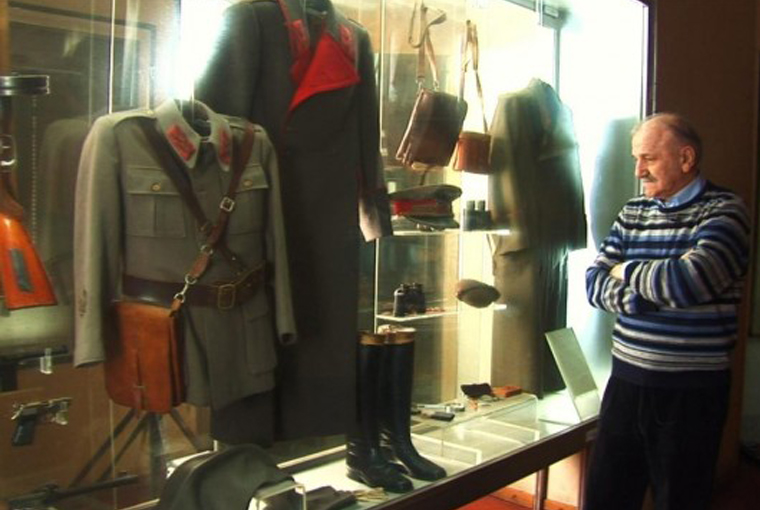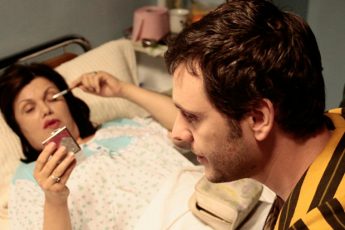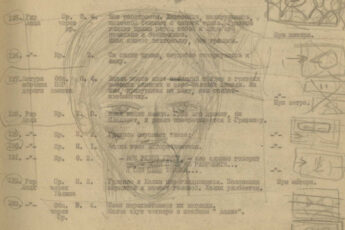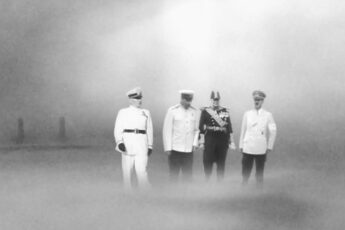Tito at the Movies - How to Save the Past?
Mila Turajlić’s Cinema Komunisto (2011)
Vol. 35 (November 2013) by Moritz Pfeifer
Tito was a film buff. From 1953 until his death in 1980, the Yugoslav president-for-life watched over 8000 films, which makes around 300 films a year (for comparison: this was Roger Ebert’s, the late film critic’s, annual review rate). Like its president, Yugoslavia was passionate about cinema during the Cold War. In 1946, the first studio – Avala Film – was founded in Belgrade and produced the first Yugoslav film Slavica (1947). During the 1950s and 60s it became the largest Eastern and Southern European Studio with international big budget co-productions like Marco the Magnificent (1964) with Anthony Quinn and Horst Buchholz, Genghis Khan (1965) with Omar Sharif, or Quo Vadis (1984) featuring Klaus Maria Brandauer and Max von Sydow. Stars like Sophia Loren, Alfred Hitchcock and Orson Welles visited and/or collaborated with the studio, usually spending some time with Tito on one of his luxurious private estates for the occasion. Most notoriously, Richard Burton played Tito in the autobiographical WWII-film The Battle of Sutjeska (1973) and was cast for the role by the president himself. Avala Film was also Tito’s major ideological mouthpiece. Propaganda films lionizing the leader made up the studio’s biggest national commodities.
Today, the studio is bankrupt, to the nostalgia and disappointment of many who have spent their lives working there. In her documentary Cinema Komunisto, the director Mila Turajlić revisits both its dark and glorious historical moments. Along with showing excerpts of the studio’s most famous productions, the director interviews its most important protagonists, inter alia Leka Konstatinovic, Tito’s private projectionist, the director Veljko Bulajić, and the film star Bata Živojinović, most famous, in the director’s account, for impersonating heroic anti-Nazi partisans in seemingly endless WWII movies. The director invites her characters to travel back in time. She takes them to the studio, to a war museum, to film sites, and to Tito’s ruinous estate in Belgrade where Leka used to spend most of his evenings worrying to find the right film for his movie-loving boss. Often, these scenes are padded with nostalgic memories and melancholia for a lost golden age. In one scene, a producer gives a tour through the studio’s props warehouse. He finds an old Viking costume from the epic film Battle of Ships (1963) prizing the quality of the impeccable fabric. In a museum, the director Veljko Bulajić admires Tito’s machine gun; Leka, the projectionist, proudly shows the director a watch that has Tito’s signature inscribed on the back; the director of the studio Gile Djuric admits that the regime was great, although it forced him to resign, apparently because he also favored movies that criticized it.
The director’s own take on this is ambiguous. On the one hand, cinematographic Yugo-Nostalgia may not be entirely unjustified. The sight of the ruinous studios, the rotting materials and the general decay of the studio’s massive facilities is a truly sad sight. In times where most of society and the political class seem to show little or no interest in confronting Serbia’s Communist past, preserving its cultural memory is a noble cause and all the more urgent. Although these aspects are not explicitly discussed in the film, the director seems to have an honest interest in them. She promoted a petition to save Avala Films from foreclosure sale and stated that the preservation of Serbia’s cultural heritage was a major inspiration for the film.1
Why then, is there so little of this in the movie? Instead of making a case for these archival and memorial aspects or, indeed, for the responsibility of the state to preserve its cinematographic past and assure its cinematographic future, Turajlić seems to have taken the easy road of promoting unreflected nostalgia sham. Tito is depicted in a similar way in which he probably saw himself – as an amateur movie lover and endearing father figure. The professionals in her movie seem to measure the importance of their own work in the studio with the same superficial criteria: international respect and glamor. One gets the impression that the super-production Battle of Neretva (1971) is a good movie because an entire bridge was sacrificed in an explosive scene, because Orson Welles had a role in it, or because Picasso drew its poster. To what extend the director identifies with this sloppy good-old-days posture can be read from her website where, in the last sentence on a paragraph-length history of the studio, she writes that “at the time, prominent foreign directors and actors were often engaged in Avala Film’s productions. In the eighties, we successfully revived the same good old idea.”2 In the end, the anecdotes of her characters and her own remain wistfully sentimental because she neither gives them nor herself the chance to speak about the things that she herself highlights as the crucial aspect of her labor: is it possible for a state to take care of cinema without intervention?
It is ironic that the director chose to open her film with a quote from the French leftist intellectual Jacques Rancière whom she cites saying that “the history of cinema is the history of the power of creating history.” Avala film certainly was such a power and Turajlić’s film shows how the studio depended on those in power and how it shaped public opinion. Yet, the films it produced certainly also failed to resist history’s changing course. Today, one may assume, different powers of creation are at work. Those powers looking back at history may paint the past in an unreasonable rash tone, the most radical one being to forget. But they may also paint the past in an unreasonable cheerful tone. The director’s own choice of idealizing that past may itself be subject to the “power of creating history” Rancière talks about. If the history of Avala Film looks like a costume party, then it may be high time to spoil the fun and take a close look at how things really were.




Hello, thank you for this interesting article. I just noticed a little mistake concerning dates: Tito is dead in 1980. To die (or to get death punishment like his Romanian’s nephew) in 1989 would probably have changed the course of history of the Balkans… All the best.